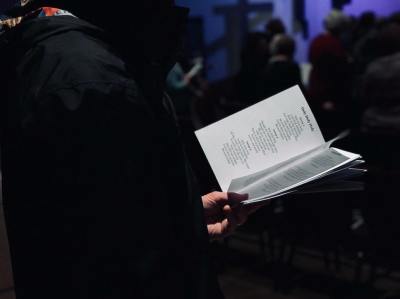Younger generations prefer smaller worship gatherings

Larger churches will have a more difficult time staying larger.
At least, that is my postulate according to our early research. And to be clear, I am defining a larger church by the size of its largest worship service, not by its total attendance. It looks like churches that are intentional about moving to more services, more venues, and more sites can indeed get larger.
This research is based on the attendance size of an individual service, not on the cumulative size of a church’s combined services. In simple terms, it will become increasingly difficult for a church to replace lost attendees at large worship gatherings.
Here are some of my thoughts:
- The large worship service is mostly a factor of the Boomer generation that gravitated toward large attractional services. Until the Millennials came along, Boomers were the largest generation in American history. They are no longer the dominant voice in cultural and religious trends.
- Gen Xers, Millennials, and Gen Zers do not gravitate toward large attractional worship services. The big church event is simply not the preference of these generations. They prefer to attend worship gatherings in a smaller setting.
- The attrition rate of the larger worship services will not be easily offset by others coming to these services. When a member or an attendee dies or moves, he or she is more likely to be a Boomer. But the younger generations will not, as a rule, replace this Boomer attrition. If the younger generations attend worship services, they will more likely go to a smaller worship gathering.
- Our early research indicates the preferred size of worship gatherings will peak around 300. After that point, the replacement of dying or moving attendees will prove more difficult. I have to be careful to even call this information “research.” We conducted a limited study of churches by size to determine their conversion rates and their assimilation rates. The best rates peaked around 300 in worship attendance. At this point, the information may not be sufficient to deem it as research. It may be more accurate to label it a hypothesis.
- If this postulate proves true, it will have a dramatic effect on local congregations. Church practices will have to adapt. Church facilities will be dramatically different. Church funding and stewardship will have new priorities. Church staffing will not look anything like it does today.
To be clear, we are well aware there are exceptions to this trend. Some churches can grow with larger worship services if they are in fast-growing demographic areas, or if they are the church with obvious momentum in the community. But those two factors will not continue indefinitely.
We will continue to keep you updated on this potentially critical issue. If you are a part of a church that seems to be having trouble replacing members who leave or die, the possible explanations could be many. But our early research indicates your challenge could be related to the size of your worship gathering.
We have only just begun to delve into this issue.
Originally posted at thomrainer.com
Thom S. Rainer is the founder and CEO of Church Answers, an online community and resource for church leaders. Prior to founding Church Answers, Rainer served as president and CEO of LifeWay Christian Resources.





















